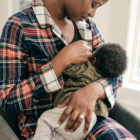Women's Health
Poor Women To Suffer Most In Current Siege On Reproductive Rights
|
While the American theocracy tightens its stranglehold on the wombs of women in Georgia, Alabama, Missouri and elsewhere, how safe are the women of Connecticut, which has some of the country’s least restrictive abortion laws? As always, your safety may depend on your income. Women with means will always be able to get abortions, whether that means spending money to travel where they are available, and finding (and paying) a doctor willing to perform the operation. But women who live in poverty are always vulnerable to the vagaries of politics, said Sarah Croucher, NARAL Pro-Choice Connecticut executive director. Connecticut is good for women, but women who are poor may have some significant challenges if abortion is restricted nationally.









